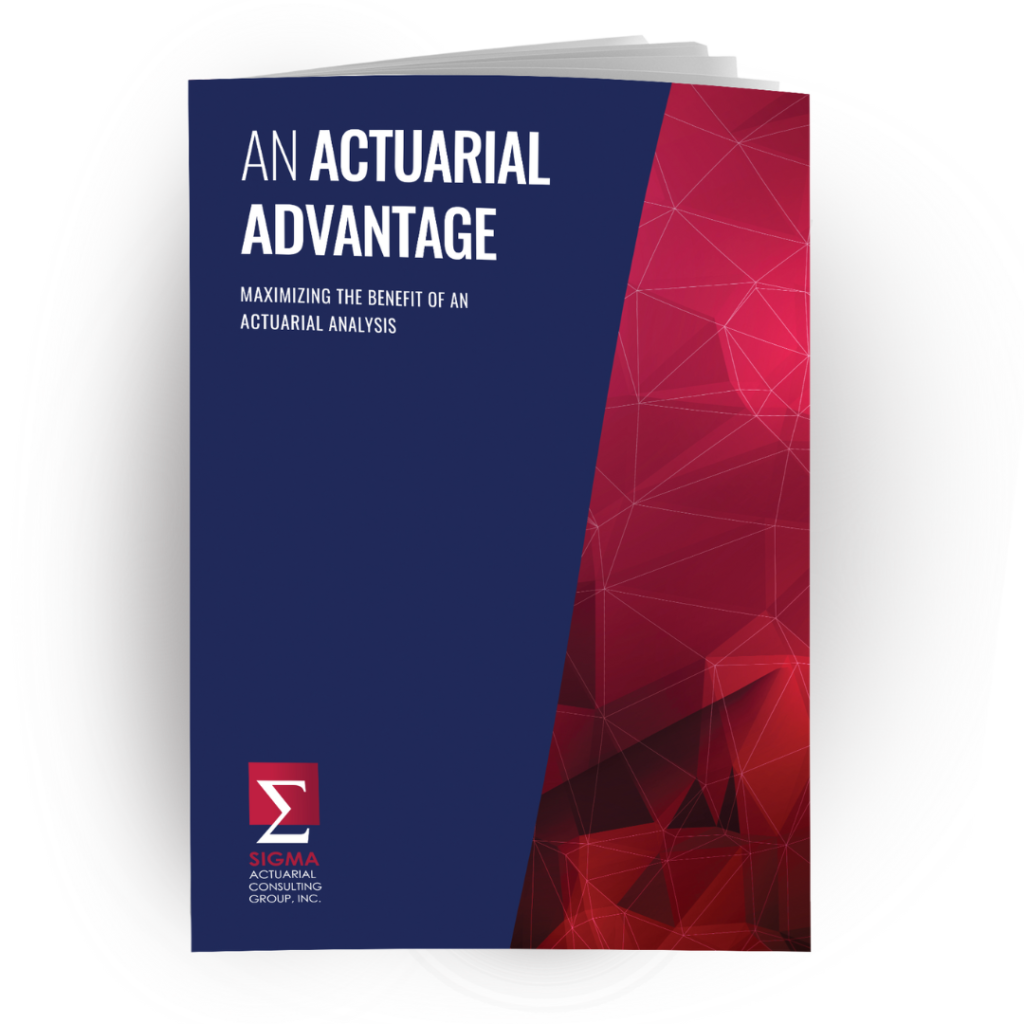SIGMA’s An Actuarial Advantage Book Club is a virtual, multi-session event hosted once a year in the fall. Each series includes four forty-five-minute sessions that give participants the opportunity to take a deeper look into An Actuarial Advantage, with insights and guidance from the SIGMA team. The book club is a great way to explore each chapter and discuss key actuarial topics in more detail.
An Actuarial Advantage was originally written by Tim Coomer, PhD, with the goal of educating his fellow insurance colleagues on actuarial concepts and methodology. The book is designed to be an accessible resource and includes real-world examples to make complex ideas easier to grasp, especially for those who may be new to the actuarial world. It offers valuable insights and clear explanations for the actuarial terms and techniques commonly encountered in the insurance industry, making it useful for professionals at any stage of their career.
Sign up for our upcoming fall session.
Let’s take a look at the top five most asked questions by prior book club attendees, along with the answers and helpful resources.
1. What determines the credibility of data, and do more years mean better data?
The credibility of data is based on a couple of key things: the volume of data available and how indicative that data is of future loss patterns. For loss development purposes, actuaries typically begin to recognize a company’s unique loss history if there are at least three sets of data evaluated at sequential (typically annual) points in time, e.g., 1/1/22, 1/1/23, and 1/1/24. However, a greater number of years does not automatically equate to better data. Large amounts of historical data could easily be invalidated if the company has undergone significant operational changes, such as mergers, acquisitions, or shifts in industry focus. In those cases, actuaries may only use the portion of data that accurately represents the company's potential future experience.
Learn more about specific data requirements for actuarial reports.
2. What do you take into consideration when evaluating an organization that has recently gone through merger and acquisition activity?
When evaluating an organization that has recently experienced merger and acquisition (M&A) activity, actuaries consider a variety of factors. First, they need to know whether historical liabilities were acquired and, if so, whether loss prevention practices will remain the same. A change in third-party administrator (TPA) is another consideration, since it can affect how claims are reserved, potentially making historical loss triangles less representative of future patterns. Additionally, if the M&A activity is expected to result in workforce reductions, there may also be a corresponding increase in claim frequency as employees seek to file claims prior to potential layoffs. These are just a few considerations that actuaries factor in when completing a reserve analysis and loss projections for companies that have recently had a merger or acquisition.
Learn more about actuarial analytics for acquisitions.
3. What extra considerations should be made when estimating ultimate losses for recent or immature periods?
When estimating ultimate losses for recent or immature policy periods, actuaries may lean more heavily on loss projection or Bornhuetter-Ferguson (BF) methods, rather than traditional loss development methods. That’s because these methods are less sensitive to the current period’s loss experience, which can still be fairly volatile. This makes them especially useful when working with newer periods where not all claims have fully developed.
Learn more about the different actuarial methods and when they can be used.
4. How do you evaluate emerging risks when not much data is present/available?
When actuaries are evaluating emerging risks, the approach often differs from what’s used for more established lines like workers’ compensation or general liability. With limited or hard-to-obtain data, actuaries often need to rely more on qualitative and research-based methods. This might include collecting any internal loss data from company leadership or key personnel to help set initial assumptions about frequency and severity. They may also reference market quotes for similar programs and use applicable industry benchmark data to support or calibrate internal findings. Once those assumptions are set, statistical modeling is used to quantify the risk.
Learn more about emerging enterprise risk analytics.
5. What is a reasonable way to choose a funding amount that would be acceptable to an auditor?
If the actuary has provided a range of reserves, selecting any amount within that range is typically acceptable to an auditor. This reserve range typically accounts for variability in loss development methods, the average age of historical liabilities, the types of claims, and the applicable retention levels. Sometimes, auditors will develop their own reserve range, which may overlap with the actuary’s. If the selected funding amount falls within both the actuarial and auditor’s range, it is typically deemed acceptable. If the selected amount falls outside of either range, the auditor may ask for additional commentary on why that amount was chosen.
Learn more about common audit inquiries relating to actuarial methodology.
If you’ve ever wanted to dive deeper into actuarial topics, explore real-world applications, or hear how other professionals interpret the concepts in An Actuarial Advantage, SIGMA’s book club is your chance. With questions that consistently spark meaningful discussion, ranging from technical clarifications to big-picture insights, each session offers a fresh opportunity to engage with both the material and a community of like-minded peers. Whether you're just starting out or looking to refine your understanding, you’ll walk away with new perspectives and practical takeaways. Sign up today to be a part of the discussion.
For more information on the topics covered in An Actuarial Advantage, RISK66’s complimentary education library is a great source for in-depth training material.
We welcome discussion with any of our insurance colleagues who want a better understanding of these topics, and those wishing to contact us can do so at support@SIGMAactuary.com or by scheduling a call today with one of our consulting actuaries.
© SIGMA Actuarial Consulting Group, Inc.

